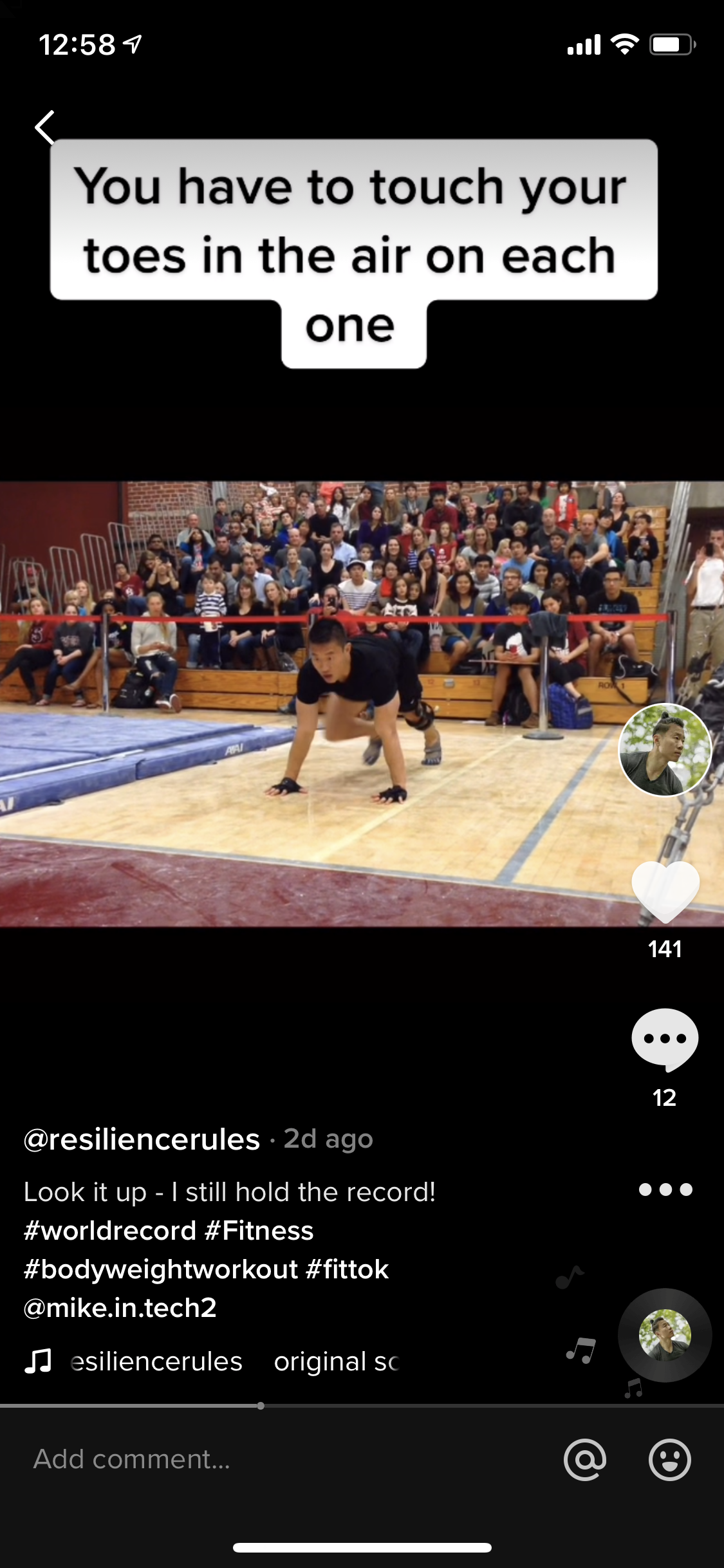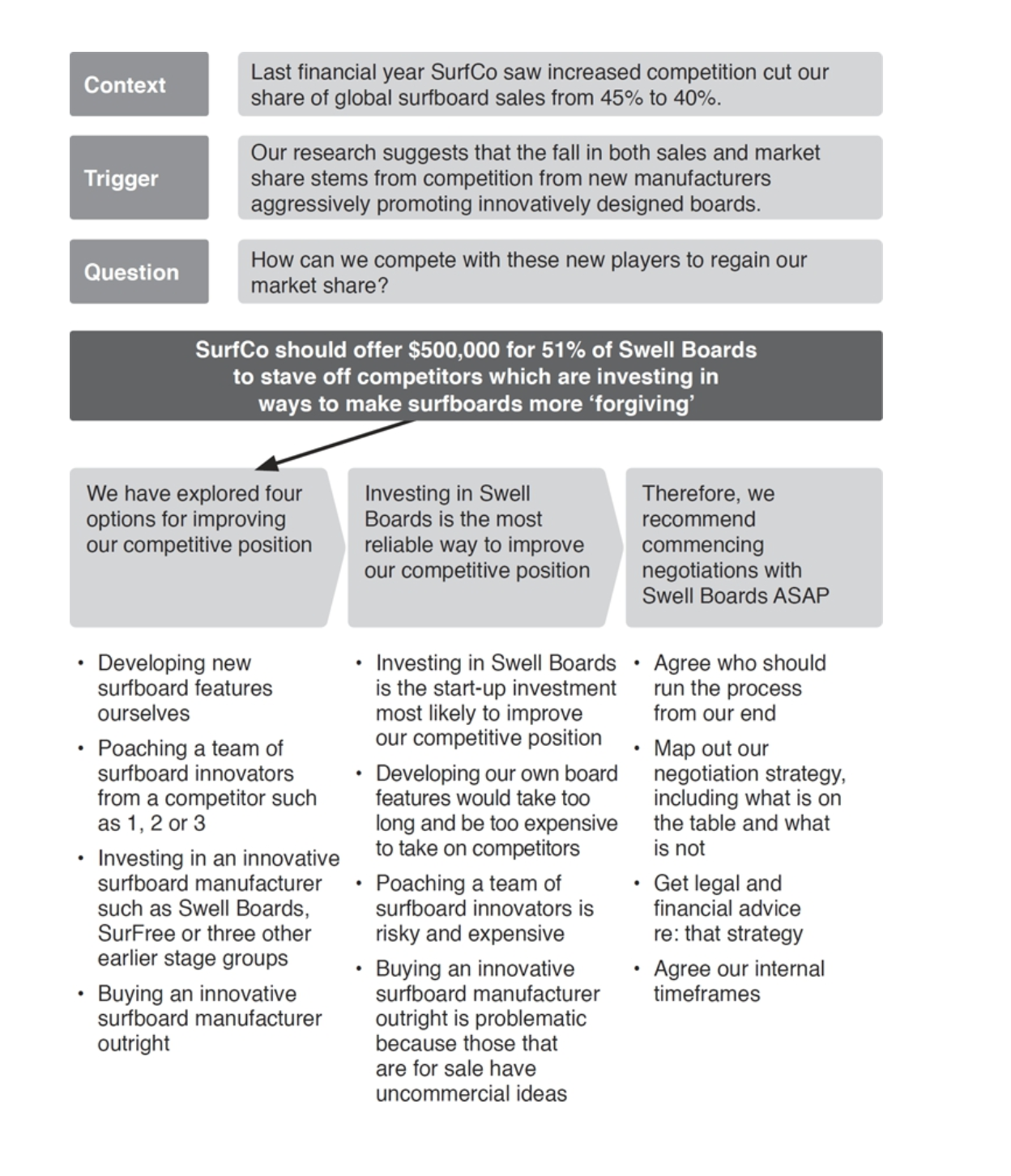This is the 55th edition of Cultivating Resilience, a weekly newsletter how we build, adapt, and lead in times of change—brought to you by Jason Shen, a former gymnast and 3x startup founder turned Facebook PM.
🖼 How I Set a Guinness World Record (Tiktok)

I’ve been making Tiktok videos for the last few weeks and this has been my best hit so far. You can actually fit a lot into 60 seconds if you really try.
🧠 How to Align On and Communicate Strategy to Executives with Storylines
When we run into trouble, especially within an organization, there’s often a lack of clarity about how to resolve it and get to a better place. As a leader, you need to be able to get alignment across a wide set of stakeholders on how to move forward, and balance the high-level points with the specific details.
Enter Storylines.
I recently finished a great book about how to communicate strategy, plan or set of recommendations in a very organized and compelling framework. I’ve been using the system at work and it’s been really helpful so I wanted to share it here.
The book is called The So What Strategy by Davina Stanley and Gerrard Castles. It borrows heavily from the SCQA format of the legendary Pyramid Principle by Barbara Minto1, but it’s shorter, tighter, and feels more flexible / useful.
Stanley and Castles call their tool a “Storyline” and I feel it’s beauty lies in the 2 part structure:
The Setup
- Context: you start with key information that is uncontested but relevant to the situation. Maybe it was the original target for your product’s metrics, or the history of a department.
- Trigger: then you identify what’s recently happened or changed that requires a discussion. This may be a major schedule slip or an upcoming event that requires a response.
- Question: the way you frame the trigger should naturally lead to a specific question about what’s going on with the situation. e.g. “How do we make up our revenue shortfall?” This is the most important question you need to answer with this particular audience.
The Response
- Answer: this is where you answer the question in a single sentence. “We should do X, Y and Z”. For a senior audience member, this is may be all you care about. But for everyone else, they’re going to want to dig in
- Answer Subpoints: This is where you break out the 3-5 sections of your summarized answer and provide more data and detail. The grouping of theIt might be as simple as the major workstreams that run in parallel to achieve your objective and answer the question. Or it might be an explanation for why your answer is the right one (as per the example below).

In this example Storyline, you see how this might be a C-level presentation to the team at SurfCo or even at a board meeting. To have $500k lying around, this company probably has at least a $2 million in cash reserves.
I have been using a Storyline to prepare for an important product review I have internally. A product review at Facebook involves the PM leading a conversation with the group leaders - the group eng manager, the design manager, the data science manager and the org director.
Before the review, I wrote (and rewrote) a draft of my product’s Storyline and shared it with my team. We talked through it together on a call, there were comments and concerns, and now I think it’s in good shape.
I can now share the storyline with my org leads ahead of my product review as a “pre-read”. Something to gear them up for the discussion. I’ll focus on the Setup and the key Answer, and in the product review, I’ll unpack the Answer’s subpoints in detail.
Oh, and one of the hardest, but most valuable parts of a Storyline is getting it down to just one page. The visual nature of the format is also really helpful just for glancibility.
Anyways, highly recommend this book if you’re looking to improve how you get better at executive/strategic communication.
The So What Strategy by Davina Stanley and Gerrard Castles
👉 Loki (Disney+)
I caught the first episode of the new Marvel series Loki and oooh, it’s good. Tom Hiddleston is so good as the charming, arrogant, and clever god of mischief, Owen Wilson is a great foil as a unflappable time cop / detective. The first episode neatly reintroduces the character to anyone who hasn’t religiously followed the MCU and sets up the main premise of the season (no spoilers!) but I’m excited to tune in every week to follow along.
Loki (Disney+)
Which I started but never finished - indicating something about its readability / compellingness. It’s like a great textbook.

